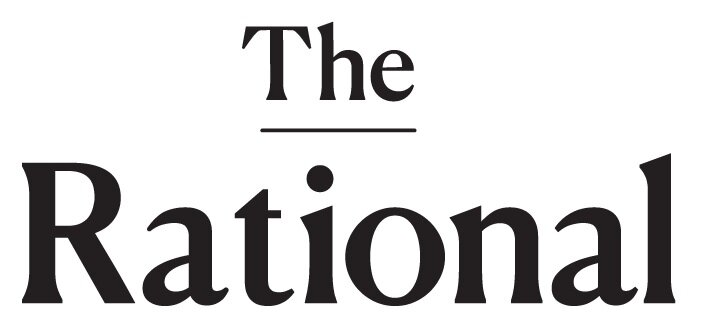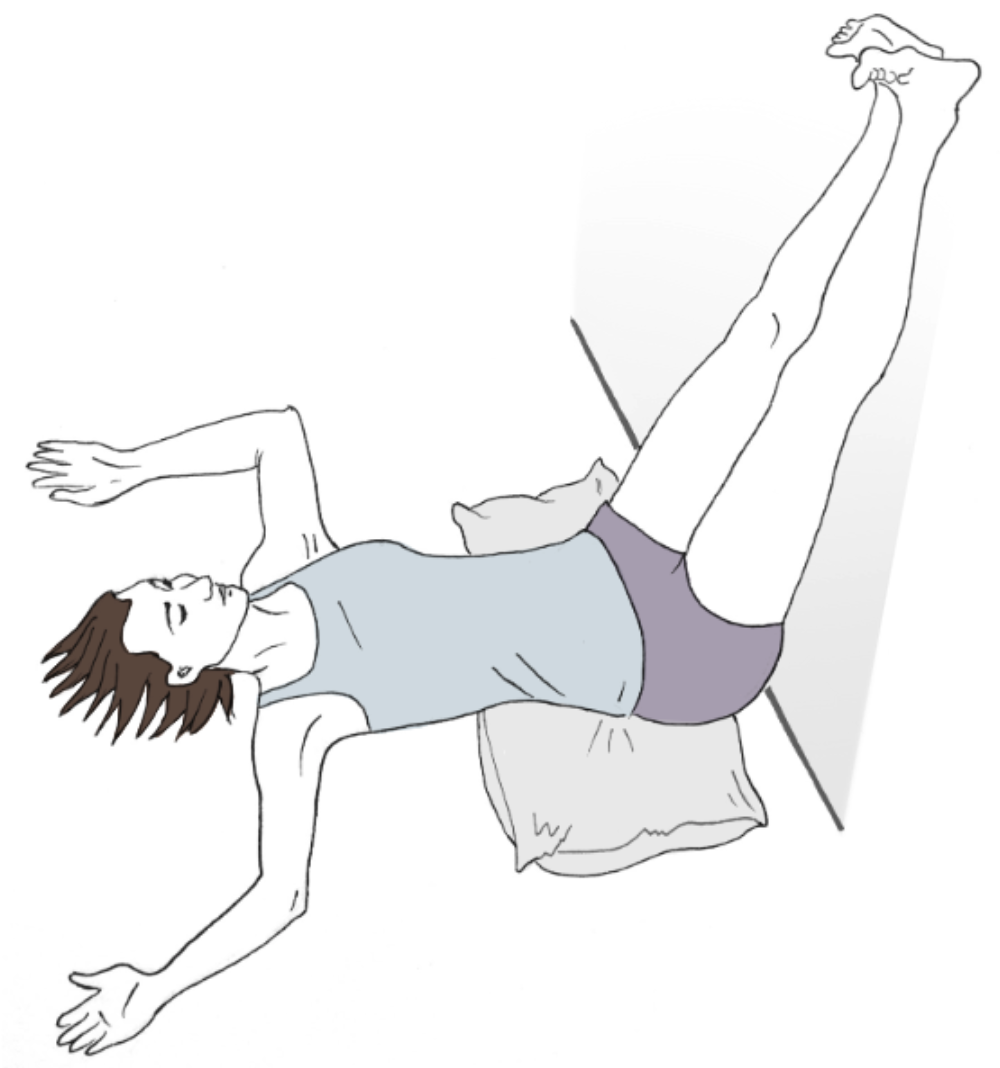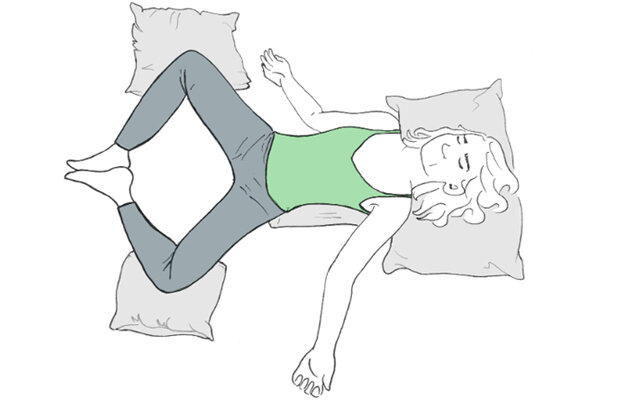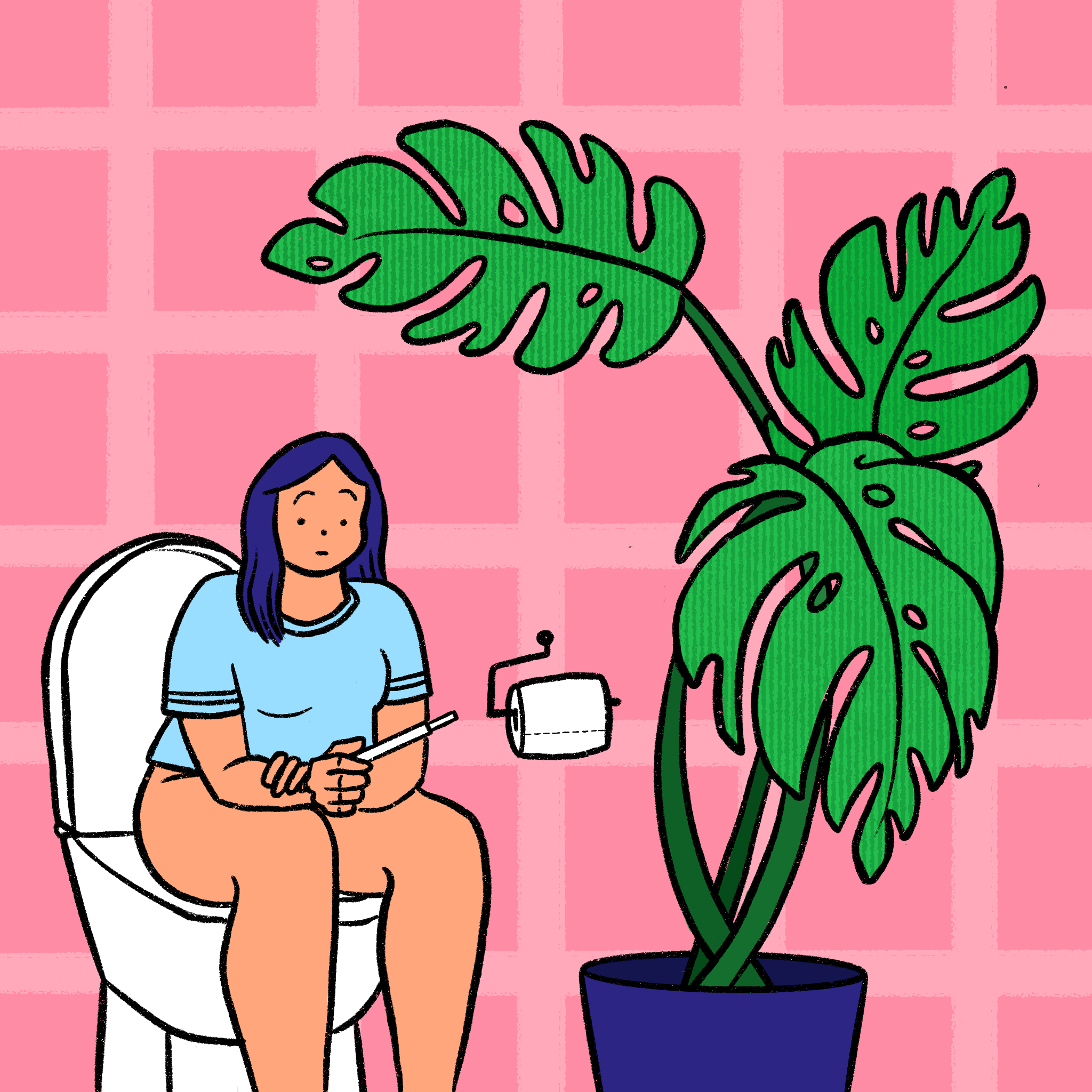Why Practicing Yoga is a Feminist Act
Try these 3 poses at home to connect with your femininity.
Credit:
Polina Tankilevitch | @ptankilevitch
Women’s wellness teacher and yoga therapist, Tina Nance, teaches a potent and embodied class at Bali’s famous Yoga Barn in Ubud – the so-called “spiritual capital” of the east. Coming from an inquisitive background myself, I was interested in exploitation, authenticity and the effects that the rising yoga industry and expat communities are having on local populations in these yoga destinations around the world. After feeling intensely moved and inspired by Tina’s practice, and witnessing the diverse women spontaneously converging into a sharing circle after each class to offer their insights and discuss personal issues, I needed to find out more.
As I sat down to chat with Tina on one of the many daybeds dotted around the tropical paradise of the Yoga Barn, I couldn’t help but feel her energy: She is strikingly beautiful, with long brown hair, piercings and a cleopatra-esque confidence that oozes sensuality, ease and a powerful femininity. It took a while to get this sought-after teacher on her own, but she was more than happy to share her story.
Aptly named “Women’s Balancing Yoga,” this specific class values what Tina calls the “feminine, yin qualities” that have been “over-yanged” in a system that often favors men. In a world where value and worth are “entirely in the masculine,” Tina believes that we have moved on from the need to assert our energies in “masculine” forms like extreme physical exertion, aggressive attitudes and long working hours. She describes the toxicities that modern living has plagued us with such as excess sugar, stress, xenoestrogens from plastic, and mercury exposure. All of which create a confusion within our bodies. And significantly, these lifestyle stresses are causing an inhibitory effect on the female reproductive system, according to several studies from the Journal of Reproductive Immunology. Tina’s response to all of this was to create a re-balancing and gentle practice of self-care.
‘Women’s Balancing Yoga’ is Tina’s response to what she calls “the feminine rising”––women “wanting to re-empower themselves,” to be seen fully for their worth as individuals. We are seeing ourselves as whole people, already complete. We already know what we need to do, we just might need someone to spark that body-remembrance.
The Legs Up on Wall pose
To do this, lay on your back with your bum a few inches from the wall. Place a bolster under your hips and rest your legs against the wall. Relax.
With a background in wisdom traditions (Hinduism, Buddhism, Taoism, etc.)––which Tina refers to as each sharing a “masculine lineage”––I wondered what inspired her to focus on the significance of reconnecting women to their “feminine nature of being.” Tina argues that yoga has been birthed from men: it has been written by men and taught by men. The wisdom traditions we know today have been brought to us through a male’s perspective. Not only have we assumed these traditions, but we have also misinterpreted aspects of our innate human qualities in the chaos of our daily lives. This causes an imbalance in all aspects of our lives, she says. But the question is – if we agree that this is the case, how can we change this, or at least become aware of it? How can we tap back into our feminine nature whilst exercising a practice that was formed through a masculine lens?
Tina advocates that we are both feminine and masculine, but says that this has been overlooked in wisdom traditions like Yoga. This is one of the many reasons that she opts for a mindful practice of baring ourselves down to our inherent connection with mother earth through a practice of drawing in on ourselves and feeling what our body feels. It’s a yoga that honors both the “divine” feminine and masculine qualities necessary for a balanced life experience. However, Tina informs me that she is “less attached to the idea of masculine and feminine because it eventually has a glass ceiling” – it’s limiting. Yin and Yang, she believes, have less gender bias and more space, and, I will add, are inherently interconnected. The basic meaning of the duality symbol of yin/yang (light/dark, sun/moon, positive/negative charge, and so on) is that one cannot exist without the other in the natural world. Just like feminine/masculine. Certain aspects of masculine behavior, she says, if unattended to, can result in “unconscious” behaviors that remove us further from our “true essence” and inherent conscious masculine and conscious feminine:
“These are generalizations, but we could say that the unconscious masculine looks like disassociation and numbness, and the conscious masculine looks like resting in awareness of everything as it is,” she said. “These are two very different things, but they often look the same.”
Tina views the “unconscious feminine” state as being “identified with emotion.” For her, this means identifying strongly with a story or a feeling, and viewing it as part of oneself, instead of seeing it for what it is: a separate entity that can come and then go as quickly as it arises. For Tina, “the conscious feminine” state is “feeling everything and being informed by that communication.” In other words, we consciously respond, rather than allow the emotion to take over and be viewed as part of our identity. There is a distinction between feeling anger, for example, and being an angry person.
The Restorative Child’s Pose
To do this, place your toes together, spread your knees wide and sit back towards your heels. Place a bolster underneath your torso and relax into it.
Creating a fusion of the ancient traditions of Indian yoga, Traditional Chinese Medicine philosophy and intuitive techniques, Tina’s class is eclectic. It’s aim is to “calm the nervous system and promote the flow of blood and chi [energy] into specific endocrine glands and organs that play a key role in a woman’s hormonal balance.”. It is her way of supporting women who are experiencing reproductive and hormonal imbalances––which she refers to as “just the tip of the iceberg.” (The iceberg of the suppression and detachment of the female body due to the past two thousand years of predominantly patriarchal rule.) This, she said, has removed our “connection to the body, to sex––sensuality and sexuality––and connection to the earth.” These qualities, which Tina views passionately as “feminine,” were not only removed but “shamed.”)
Using the anchor of the body as more than “just preparation for meditation” is essential for this feminine practice. For Tina, this means coming into “direct contact with the fact that mind, body and spirit are inseparable.” Also known as the ‘bodymind’ intelligence in alternative philosophy, this notion views mind/body/emotions/spirit as an integrated whole for which every experience is stored in the body.Tina began listening to her body, “allowing it to speak, and it to direct [her] practise.”
“I just wait for the body to be moved, rather than the other way around – like spontaneous dance where something starts to happen through us,” said Tina. “I don’t really know a step-by-step process. It’s a result of embodiment, consciously being here more.” She listens, and her body takes over, she said. “This whole dynamic current of energy moving through our body that knows exactly where to go and how to awaken the body, I would describe that as feminine.”
By directing her practice and teaching through a therapeutic lens, Tina employs the meridian pathways system of Traditional Chinese Medicine. This therapy maps out energy lines running through the body, working with “different organs, thought frequencies, emotions, fascia and connective tissue.” And so, Tina’s balancing class promotes a restorative, gentle and receptive yoga of presence. The objective is to ease the discomfort caused by hormones and menstrual cycles—premenstrual syndrome, fatigue, mood swings, anxiety, depression, cramps. The effect is immense.
During the 90-minute class, her meditative commentary allows students to be present as she paints a picture of the mind as a clear blue sky, whereby thoughts are clouds, just passing by, always changing, always moving. Because of its restorative focus, students are given various yogic ‘props’––a strap, bolster, blocks and a blanket––and set up in various five-to-ten-minute-long postures. My favorite of these is the hip-opening Supta Baddha Konasana. For this posture, also known as Reclining Bound Angle Pose, you lie on your back with the soles of your feet pressed together, knees spread wide, with a bolster (a long, thick pillow) underneath your torso.
The Reclined Bound Angle Pose (with Bolsters)
To do this, lie back, place the soles of your feet together, and spread your knees wide apart. Place cushions under your knees, a bolster under your back and a pillow under your head. Ease into the pose and rest.
We store tensions in our bodies, particularly the hips, so these hip-openers––pervasive in restorative styles of yoga––are also said to be home to meridian pathways connected to certain hormones; specifically, the hormones that may be out of balance for women. Understandably, holding these asanas for lengthy periods of time gently forces us to pay attention to the areas of our bodies, and our lives, that have perhaps been neglected. They also allow a refreshed flow of energy to run through our bodies. Double whammy.
Tina’s all-female class offers an example of why “being around a sisterhood, around other women [who] support what you are doing, is so important.” Just like my own journey to this class from the other side of the world, and just like Tina’s story, she says, “women are finding their voice and that’s a rising––initially through a curiosity and then through an exploration.” The “tiara-wearing, superficial goddess culture” concerns her. She worries that people see that which is louder and on the surface, and go on to make assumptions that can devalue the depth of the feminine work that is actually taking place.
Despite some very obvious tendencies for Westerners to bombard a good thing and potentially limit the inclusion of a country’s locals (think party strips on the beach, alcohol abuse, etc.), Bali is also home to some very popular and authentic yoga studios run by Balinese teachers. These teachers incorporate their traditional Hindu practices of worship alongside traditional yoga styles, and some offer discounted rates for locals. Perhaps this is their response to the “rising” that Tina describes. And during the Eat, Pray, Love stage of my own path of self-discovery in 2017, like Julia Roberts, I too ended up in Bali. But, it’s safe to say that regardless of the movie’s cringe-worthy, patronizing and predictable nature, the film got one thing right: Bali is a very special place, with appeal to the spiritual seeker from the West. In Ubud, in particular, there is a genuine integration of faithful yoga communities––communities seeking to respect and learn from the peaceful culture of the Balinese. There are also those that are authentically growing to explore this feminine rising. And this, Tina strongly believes, can “burn through any bullshit.”
Thankfully, it’s not necessary for everyone to undergo intense training, or travel to Bali, to benefit from these ideas. The real wealth of what Tina, and many other women all over the world, are exploring and sharing is this idea that we can come back into our bodies anytime, anywhere. We have the power. We can take comfort in the fact that there is a whole world of women unlocking their potentials through re-connection within their bodies. Through a re-awakening of what may lay dormant for today’s modern woman. We can practice daily self-awareness and care, on our mats, in our beds, at our desks, on the bus. The options are limitless.














